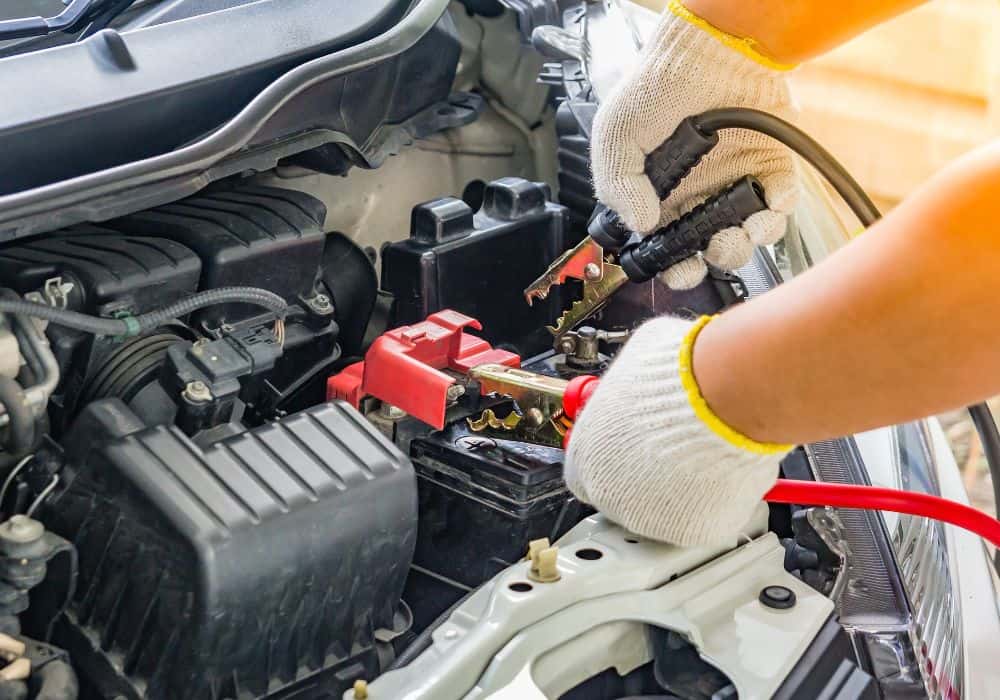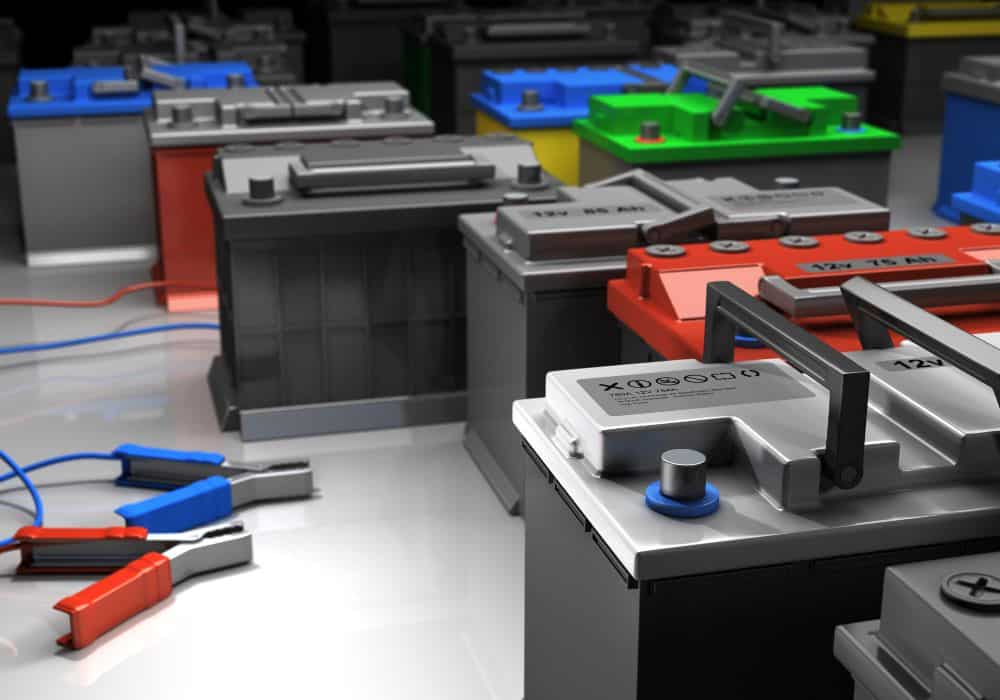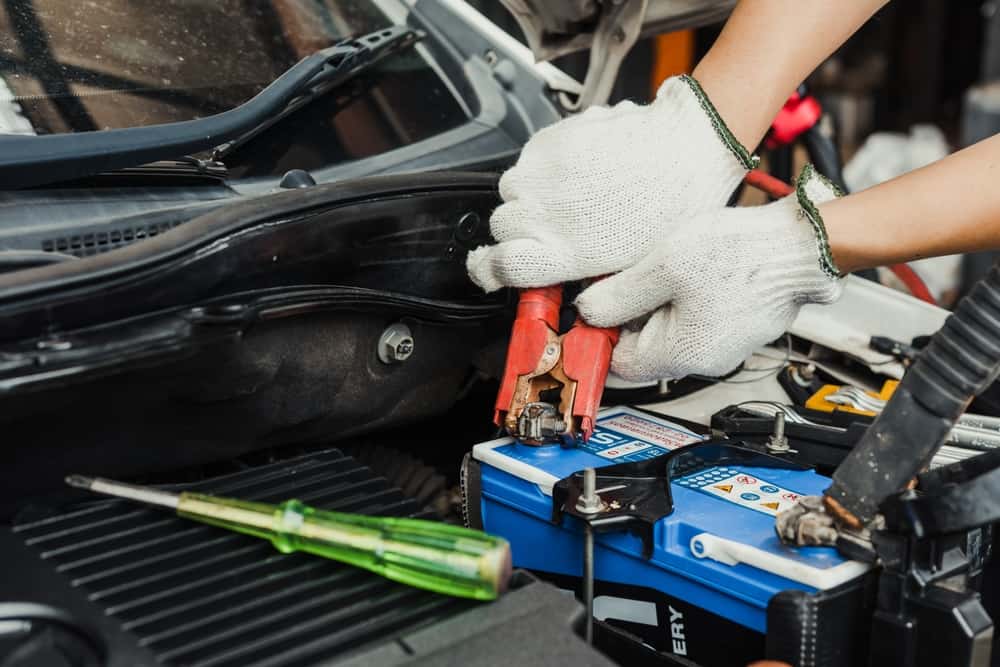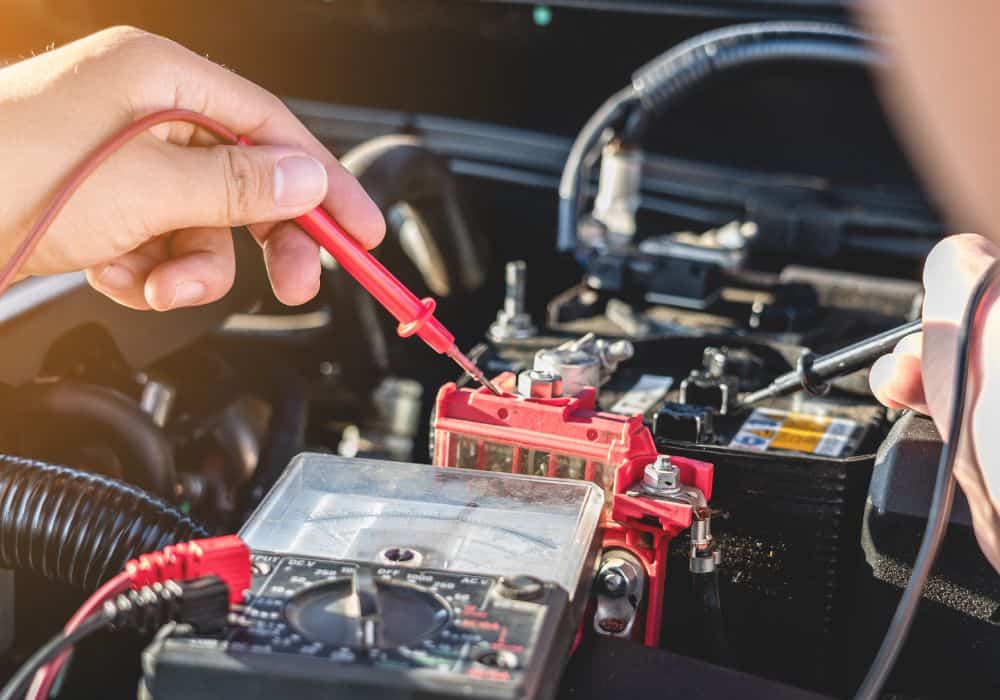Has your 24-volt battery system run out of power? Well, you’ll be glad to know that there are different ways to juice them up.
Here, I’ll discuss all these options for charging a 24-volt battery system – with the use of 12-volt chargers and a 24-volt charger as well. That way, you don’t have to worry about larger trucks, buses, RVs, or boats dying in the middle of nowhere.
Let’s get charging!
Table of Contents
Tools Needed
- Two 12-volt battery chargers OR a 24-volt battery charger
- Jumper cables
- Blue wire
- Green wire
How to Charge a 24-Volt Battery System

When two 12-volt batteries are in a series, the voltages combine together to produce the pack’s voltage. This is in contrast with parallel connections wherein the capacities add, but the battery pack voltage remains constant.
When charging this system, you have several options. Of course, this will depend on what arrangement and/or charger you have at hand.
1. Two Batteries in Series With Two 12 Volt Chargers
A 12-volt charger features low milliamp outputs (100, 200, and 500) – up to capacities of 90 amps. It can be plugged into a 115-volt outlet, although chargers delivering 65 amps and above may require a 20-amp circuit.
When picking a charger, experts recommend choosing one that is 25% of the battery/amp hour capacity. So if you have a 100 ah 12-volt battery, then you will need a 25 amp 12-volt charger (or less).
Using two 12-volt chargers is recommended for a 24-volt system because it’s the best way to give two 12-volt trolling motor batteries a full charge. This also helps prevent the discharge problems associated with battery cycling.
Here’s how to use two 12-volt chargers:
- Connect the red jumper cable of the first charger with the positive terminal of one battery.
- Affix the black cable with the negative terminal of the same battery.
- Connect the second charger’s red cable to the second battery’s positive terminal.
- Lastly, connect the black cable with the negative terminal of the second series.
2. Two Batteries in Series With One 24-Volt Charger
If you don’t want to go through the trouble of using two 12-volt chargers, you can always use a 24-volt charger to power a 24-volt battery. It’s more powerful, and it helps reduce voltage drops. The issue, however, is it requires more power.
Here’s how to use a 24-volt charger to power up your 24-volt battery series:
- Connect the charger’s red cable to the positive terminal of the first battery.
- Affix the black cable with the negative terminal of the second battery.
3. Four Batteries in Series/Parallel With Two 12 Volt Chargers
Although this arrangement is not recommended, you can charge this battery series/parallel with the use of two 12-volt chargers. The caveat, however, is that the four batteries won’t be charged evenly.
Depending on the contact resistance and the cable, two of the batteries may be charged with 0.5/0.75 volts less than the others.
If you’re okay with this voltage imbalance, then make sure to follow these steps:
- Connect the first charger’s red cable to the positive terminal of the battery near it (right upper).
- Join the black cable with the battery’s negative terminal.
- Connect the second charger’s red cable with the lower right battery’s positive terminal.
- Link the black cable with the second battery’s negative terminal.
If you want to avoid uneven charging – and still use two 12-volt chargers – you may do so as well. You will just need additional materials, namely blue and green wires. How you connect the cables will differ too, as I’ll explain below:
- Attach a green wire (ground wire) between the left upper battery’s negative terminal and the left lower battery’s positive terminal.
- Connect the red jumper cable of the first 12-volt charger with the right upper battery’s positive terminal.
- Attach a blue wire on the left upper battery’s negative terminal and connect it with the first charger’s black jumper cable. This should help reduce the current flow from the charger.
- Connect the second charger’s red cable with the right lower battery’s positive terminal.
- Affix another blue wire on the left lower battery’s negative terminal. Connect this with the second charger’s black jumper cable.
4. Four Batteries in Series/Parallel a 24 Volt Charger
As mentioned above, using two 12-volt chargers can lead to the uneven charging of the four batteries in a series/parallel configuration. As such, the use of a single 24-volt charger for this setup is highly recommended.
Like the 12-volt charger, a 24-volt charger is available in 100, 200, and 500 milliamps. It can also deliver as much as 40 to 50 amps. They can be plugged into a 115-volt outlet, although 30-50 amp chargers may require 20 amp circuits.
Similarly, your 24-volt charger’s size should be about 25% of the battery capacity. Again, if you have a 100 ah 24-volt battery pack, then you need to use a 25 amp 24-volt charger (or less).
Below, you’ll find two ways to use a 24-volt charger. The first method requires the addition of a blue wire.
To go about this, you need to:
- Connect the 24-volt charger’s red jumper cables with the right upper battery’s positive terminal.
- Attach the blue wire with the left lower battery’s negative terminal.
- Connect the charger’s black jumper cable with the affixed blue wire.
The second method, meanwhile, necessitates the use of both blue and green wires:
- Use a green wire to connect the negative terminal of the left upper battery with the positive terminal of the right lower battery.
- Join the charger’s red cable with the right upper battery’s positive terminal.
- Attach a blue wire to the negative terminal of the left lower battery. Join the charger’s black jumper cable with this wire.
Length of Charging Time
To determine recharging time, all you need to do is divide the amp hours that need to be replaced by 90% of the charger’s rated output.
For example, if you have a 100 amp hour battery that is discharged by 10%, then it will need a replacement of 10 amps.
If you have a 5 amp, 12-volt charger, the formula is 10 amp hours/(.9×5) amps. As such, you will need 2.22 hours to recharge your battery system.
Recharging Frequency
How often should you recharge your 24-volt batteries, anyway? According to experts, the frequency varies according to the situation. For lead acid batteries, including the Gel and AGM sealed types, it’s best if you keep them fully charged whenever possible.
Yes, this means keeping the batteries charged even if you’re not using them. In fact, you should make it a point to power up your 24-volt batteries at least once a week.
What Happens During Battery Charging?

When you charge your 24-volt batteries, they undergo three stages. Let’s explore each one of them.
1. Bulk
Whether you’re using a 12-volt or 24-volt charger, the bulk stage covers about 80% of the recharging process. In this stage, the current remains while the charging voltage is increased.
The charger will provide as much as 25% of capacity in amp hours, However, it will not increase the temperature of an AGM/GEL battery over 150 F, or that of a wet battery over 125 F.
Although both chargers produce a target voltage of 2.4 to 2.45 volts per cell, their absorption voltages differ. The 12-volt charger will yield 14.4 to 14.7 volts (15 volts in some cases), while the 24-volt charger will produce a whopping 28.8 to 29.4 volts.
2. Absorption
The absorption stage, meanwhile, involves the last 20% of the charge cycle. Here, the charger holds the absorption voltage while decreasing the current until the charging process is complete.
Pro tip: If your battery system is unable to hold a charge, or if the current doesn’t decrease after the charging time, then you may be dealing with a sulfation problem.
3. Float
The Float stage involves reducing the voltage to around 2.25 volts per cell, which equates to 13.5 VDC for a 12-volt charger and 27 VDC for a 24-volt charger. The current, meanwhile, is limited to just 1% of the battery capacity.
As such, it is useful for keeping a fully charged battery for an indefinite time.
Do remember that some chargers shut down instead of delivering a float voltage. Likewise, some will monitor the battery and initiate a charge as needed.
Conclusion
To charge a 24-volt battery system, you can use either two 12-volt chargers or a single 24-volt charger. Connecting them will depend on the setup (series or series/parallel.) Generally, the red cables go with the positive terminals, while the black ones connect to the negative terminals.
You may also use blue and/or green wires, depending on the situation. Since setups vary, always make sure to refer to the guide I’ve written above.
Have any thoughts about the connections I’ve discussed? Feel free to post your questions below!

